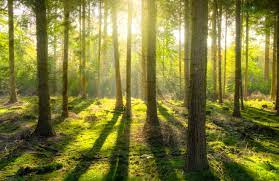CURRENT AFFAIRS
Get the most updated and recent current affair content on Padhaikaro.com
India State of Forest Report (ISFR) 2019
- IAS NEXT, Lucknow
- 08, Feb 2021

India State of Forest Report (ISFR) 2019
The Ministry for Environment, Forests and Climate Change has released the India State of Forest Report (ISFR), 2019.
ISFR is a biennial publication of Forest Survey of India (FSI), an organization under the Ministry of Environment Forest & Climate Change.
The ISFR assesses the forest and tree cover, bamboo resources, carbon stock and forest fires.
The 2019 report for the first time has assessed the qualitative nature of the forest cover, including listing its biodiversity and the type of plants and trees found.
It also created a national forest inventory for the first time on produce from forests.
Forest Cover
Forest Cover (Area-wise): Madhya Pradesh> Arunachal Pradesh> Chhattisgarh> Odisha> Maharashtra.
Forest Cover (Percentage): Mizoram (85.4%)> Arunachal Pradesh (79.63%)> Meghalaya (76.33%)
Increase in Forest Cover
The country’s forest cover includes all patches of land with a tree canopy density of more than 10% and more than 1 hectare in area, irrespective of land use, ownership and species of trees.
The total forest cover of the country is 7,12,249 sq. km which is 21.67% of the geographical area of the country.
The top five states to have shown an increase in forest cover include Karnataka (1,025 sq. km) > Andhra Pradesh (990 sq. km) > Kerala (823 sq. km) > J&K (371 sq. km) > Himachal Pradesh (334 sq. km).
Decline of Forest Cover in North Eastern Region
Total forest cover in the North Eastern region is 1,70,541 sq km, which is 65.05% of its geographical area.
There has been a decrease of forest cover to the extent of 765 sq km (0.45%) in the region.
Except Assam and Tripura, all the States in the region show decrease in forest cover.
Forest Cover in Tribal Districts
The total forest cover in the tribal districts is 4,22,351 sq. km, which is 37.54% of the geographical area of these districts.
There has been a decrease of 741 sq. km of forest cover within the Recorded Forest Area/ Green Wash (RFA/GW) in the tribal districts and an increase of 1,922 sq. km outside.
There has been a decline in tree cover inside forests due to tribal populations getting “land titles” (patta) and there has been a rise in trees outside the forest area due to an increase in tree plantation and afforestation activities.
Forest Cover of Hill Districts
There are 140 hill area districts in India which have a forest cover of 2, 84,006 Km2.
The forest cover of hill districts is 40.30% of their overall geographical area. India State Forest Report 2019 (ISFR 2019) recorded an overall increase of their forest cover by 544 SQ. KM in two years.
Forest Fire
India State of Forest Report 2019 has reported that the forest fire incidents in India have decreased by 20%.
Increase in the tree cover
Tree cover comprises of tree patches of size less than 1 hectare occurring outside the recorded forest area.
The tree cover of the country is estimated as 95,027 sq km which is 2.89% of the geographical area.
Maharashtra has had the highest increase in tree cover and a large part of that is due to horticulture.
Tree Cover & Forest Cover
The MoEFCC defines ‘forest cover’ in India as all lands, more than one hectare in area with a tree canopy density of more than 10%.
The ‘tree cover’ is defined as tree patches outside recorded forest areas exclusive of forest cover and less than the minimum mappable area of one hectare.
Trees outsides Forest
Between these two is a third measure, called ‘trees outside forest’, or TOF.
Since tree cover measures only non-forest patches that are less than 1 hectare, it is only a part of TOF.
Forest Cover Classification
Classification scheme for the purpose of Forest Cover assessment is described as follows:
Very Dense Forest All lands with tree canopy density of 70% and above.
Moderately Dense Forest All lands with tree canopy density of 40% and more but less than 70%.
Open Forest All lands with tree canopy density of 10% and more but less than 40%.
Scrub Degraded forest lands with canopy density less than 10%.
Non-forest Lands not included in any of the above classes.
In comparison to 2017
The 2019 survey has found an increase of 5,188 sq km in total forest and tree cover in the country.
Tree and forest cover together made up 24.56% (8,07,276 sq km) of India’s area. In the last assessment it was 24.39%.
Mangrove cover in the country has increased by 54 sq km (1.10%) as compared to the previous assessment.
Carbon Stock
The total carbon stock of the country was estimated at 7124 million tons, which is an increase of 42.6 million tons from the last assessment.
It implies that India is on the right track to achieve its Paris Agreement commitment of 2.5 -3 billion carbon sinks.
Wetlands
The total number of wetlands located within the RFA/GW is 8.13%.
Amongst the States, Gujarat has the largest area of wetlands within RFA in the country followed by West Bengal.
Forest Produce
Dependence of fuelwood on forests is the highest in the State of Maharashtra, whereas, for fodder, small timber and bamboo, dependence is highest in Madhya Pradesh.
The analysis reveals that 21.40% of the forest cover of the country is highly to extremely fire prone.
National Forest Policy, 1988
The policy aims at maintaining of environmental stability.
It looks at conserving the natural heritage of the country by preserving the remaining natural forests.
Increasing forest/tree cover in the country through massive afforestation and social forestry programmes.